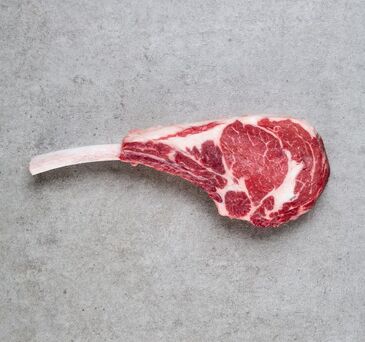How to Cook the Perfect Steak
With Nico Ewert, executive chef at Bon Vinant Group
Cooking the perfect steak
Cooking a perfect steak should become an obsession. Something you enjoy doing and enjoy eating. Learn to learn from the odd failure. See it as a journey, learning a new skill. Don’t be too hard on yourself if it doesn’t go quite right the first time or if it’s a couple of degrees over. It’s meant to be fun. Enjoy the experience and over time it’ll become second nature, muscle memory if you will. You’ll be cooking steaks without even needing to get the thermometer out in no time but these things take practice. Enjoy the journey
Ingredients
Good quality steak
Salt
Black pepper
Cooking oil
Knob of butter
Equipment
Heavy based frying pan
Tongs
Tablespoon
Oven/cake rack over a plate or dish to rest meat
Method
1. Bring steak to room temperature. Dry the meat by blotting with paper towel. Always dry meat before cooling to reduce evaporation which will cause steam & excess oil splatters
2. Open windows and put on the extraction fan. Get a tea towel ready to frantically wave at the fire alarm. This will get a bit smokey
3. Get pan very hot, season the steak with salt only. Best technique is to hold the steak in your non dominant hand and let the salt fall by sprinkling it from your other hand. Do this from distance of at least 30cm above the meat. The salt will rain down and cover every piece of the steak. Black pepper will burn at this heat so is best added at the end.
4. Add a tablespoon of cooking oil, don’t use fancy cold pressed oils for this as their smoke point is too low for this high temperature cooking method. Quickly swirl the oil, which should be very liquid from the high heat, to cover the base of the pan
5. Place the steak in the pan by holding it up in front of you by one end, use tongs, and gently placing the lower end in the pan on the closest side to yourself. Gently let the steak down away from yourself till laying flat in the pan
6. Give the pan a tiny shake to stop the steak from sticking down to one spot
7. Let the steak sit for at least 30 seconds before flipping over. Always grab the closest end with the tongs, lift straight up and place down as before, away from yourself. Oil splashes are not fun and this method reduces this significantly, it also makes you look like you’ve done this a thousand times before, a proper pro. Keep flipping the steak and moving it around the pan while doing so. Add a knob of butter once the meat has a decent brown colour on both sides. Spoon the butter over the top side as it’s cooking. Keep flipping steak every 30 seconds or so and keep basting with foaming butter.
8. Repeat until you have given roughly 3 minutes on each side for a medium rare steak (for rare 2 minutes and for medium 4 minutes on each side)
9. Place meat on rack and pour over the fat from the pan.
10. Let the meat rest for 5 minutes to let all the energy in the meat calm down a bit. This will ensure they meat is juicy and tender.
11. Serve with a good crack of black pepper
Notes on Steak
A proper butcher will prepare the best quality prime cut steak. As a rule the meat will be sourced from smaller cattle which in turn produce smaller prime muscles. The result is a thicker steak for the weight. This allows for longer cooking till the desired temperature is reached. Longer cooking means more colour, more colour means more flavour. ALWAYS dry meat when removing it from the packaging and allow to reach room temperature when cooking - remove from the fridge at least a few hours before cooking. This is the biggest difference maker and is common practice in good quality restaurants.
Notes on Pans
You are investing in good quality beef, so get a good pan. You don’t have to spend the earth to buy one either. A lot can be said about the benefits of cast iron but is a bit tricky to upkeep. Best rule is to choose a heavy based pan. The thicker the pan, the higher the heat and the better the steak. Simple. Buy a pan that will hold the amount of steak you would usually cook at home, so that there is space between each steak. Leave at least one cm space around each steak when placing them in the pan. Never overcrowd the pan.
DISCOVER OUR OTHER Articles

The John Gilmour Butchers Black Gold Range
31.03.2024 NewsRead MoreUnparalleled in reputation, John Gilmour’s Award Winning Aberdeen Angus - Black Gold Range is a premium steak range that sets restaurants apart from their competition.

Showcasing Scotland 2024
13.03.2024 NewsRead MoreWe were absolutely delighted to attend Showcasing Scotland 2024, an annual event by Scotland Food and Drink

The Tomahawk Steak
10.02.2024 NewsRead MoreIn the world of premium cuts of meat, the tomahawk steak stands out—not just for its impressive size and flavour, but for the experience it offers both the cook and the diner. As butchers, we're...



